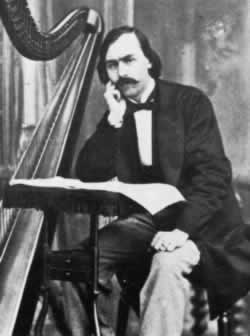One of the joys of being on leave is that I am able to stop and look - whether it be following up a particularly intriguing footnote, or having a look round an exhibition in the Bodleian on my way to the library. In a normal term, everything is so busy that I feel constantly on the back foot. Anyway - this partly explains the fairly random nature of my interests in blog posts at the moment - I'm doing my 'proper research' honest! but I'm also enjoying my wider interests.
Anyway - there's a small exhibition in the Weston library part of the Bodleian at the moment, on Ada Lovelace. She's being celebrated at the moment for her role in the history of computing - 2015 marks the 200th anniversary of her birth.
Ada Lovelace, by Alfred Challon. Source: wikimedia
In many ways, she is an inspiring female figure: Ada Lovelace day celebrates this. She was the daughter of Lord Byron, and clearly came from a very privileged background. But she used the opportunities available to her, and pursued her interests with real tenacity. Added to this, she was *extremely* clever - the Bodleian code displays a part of her paper of 1842, where she translated an Italian article on the 'Analytical Machine' by Luigi Menabrea, and added her own elaborate calculations. Many describe this as the first computer programme.
But I had heard of Ada Lovelace in a completely different context. I have known her as the patroness of John Thomas, a Welsh harpist born in 1826. He started life as a triple harpist (the triple harp is the traditional Welsh harp, with three rows of offset strings - the outer two rows identical, and the inner row chromatic). Ada Lovelace made it possible for Thomas to attend the Royal Academy of Music, and there to become an outstanding classical harpist as well.
 |
| Image source: http://www.adlaismusicpublishers.co.uk/pages/harpists/john_thomas.htm |
John Thomas is an intriguing case of someone who crossed boundaries musically, and whose music nicely embodies 'hiraeth' and nostalgia. Many of his pieces are dedicated to Ada Lovelace, and although he composed mostly in a classical idiom, he continued to embed Welsh melodies in his pieces, and to devise ways for the classical harp to mimic the particular effects possible on the triple harp. For example, if you pluck the same tune but slightly out of sync on the two outer rows of a triple harp, you get a mysterious bell-like effect. Thomas' pieces for classical harp often include harmonics played with the left-hand, so that the notes sound an octave higher, followed in rapid succession by the same tune with the right hand - the effect is similarly other-worldly. Here's a recording of 'The Minstrel's Adieu to his Native Land' - you can hear the bell effect in the third variation. To my mind, this is musical longing and nostalgia quite literally figured in the music as one instrument is made to mimic another.
Thomas' music is often set on harp exam syllabuses since it is technically quite rigorous. It's also quite lovely, and the role of Ada Lovelace, great mathematician, mother and model of determination, is very pleasing.

No comments:
Post a Comment